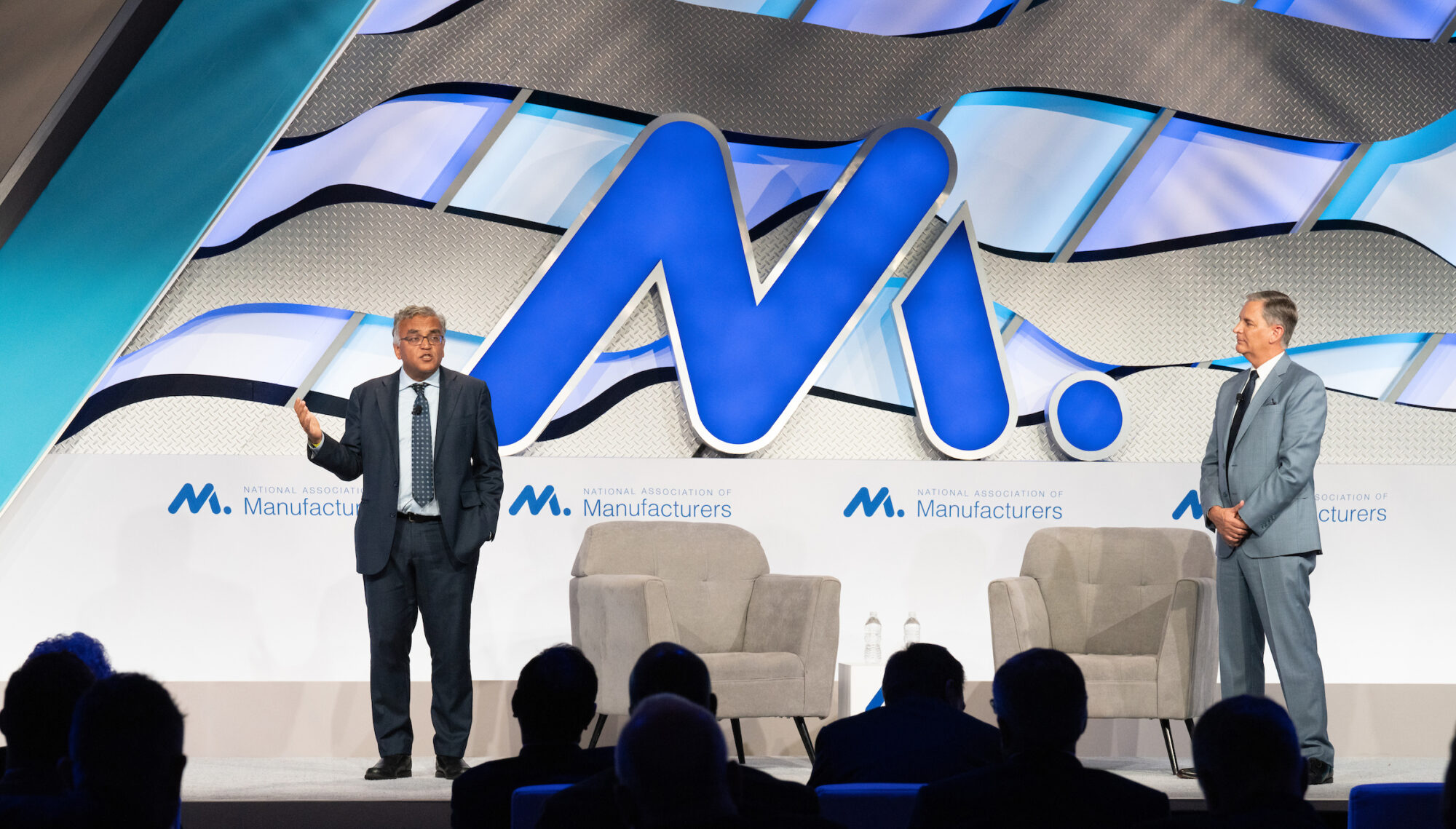Dr. Ashish Jha on the Next Phase of Pandemic Response

This winter, we might be facing both a difficult flu season and another surge of COVID-19. How can manufacturers help protect workers and all Americans from illness, hospitalization or worse? Dr. Ashish Jha, the White House COVID-19 response coordinator, gave a comprehensive answer at an NAM gathering of manufacturing leaders last week. Here’s what he had to say.
The situation today: Though both COVID-19 infections and deaths are down, Jha noted that if we keep steady at today’s numbers, we’ll be seeing 100,000 to 150,000 deaths per year—three to five times worse than the average flu season.
- However, “almost every one of those deaths is preventable,” he emphasized. In fact, we are better able to fight COVID-19 than the flu, as we have more effective treatments for the former.
- If we take some proactive measures, Jha added, we can “drive the death number down 90%.”
What to expect: The near future is rather worrying, according to Jha. The combination of COVID-19 and flu stands to hit us hard this winter.
- We’ve had two seasons in a row with “little to no flu”—in large part thanks to COVID-19 mitigation measures like masking and avoiding large gatherings.
- This year, however, people have largely stopped masking and are back to congregating in person. And there is reason to expect a COVID-19 wave anyway, as infections spiked during both the past two winters.
- Meanwhile, there are alarming indications that this flu season will be harsh. Jha noted that public health officials watch the southern hemisphere during our summer (their winter) to see what our flu season may be like—and this year, the southern hemisphere had an “early and robust flu season.”
- In addition, the health care workforce is truly exhausted after more than two years of the pandemic. “There’s no question that this is potentially challenging,” Jha concluded.
What to do: As alarming as the situation might be, Jha says there is “good news” as well. “We can actually control and prevent a large chunk of what might be coming down the path,” he said, as long as we focus on three key measures.
Vaccines: This is the big one. Getting people vaccinated against COVID-19 and flu is essential, said Jha, and the new BA.5-specific COVID-19 shots will make a big difference.
- The U.S. is the first country to authorize such a shot, and that means we now have a “vaccine that exactly matches the dominant variant” and that offers much better protection for today’s environment than the original vaccines.
- Jha praised manufacturers’ and the NAM’s efforts to encourage workers to get vaccinated and urged manufacturers to continue their efforts this season, including by offering paid time off for workers getting vaccinated.
Treatment: The second essential element is treatment. As Jha explained, we have very effective treatments for COVID-19, including antivirals and monoclonal antibodies. We must make sure that people have easy access to them, via test-and-treat sites and telehealth, for example. Employers can also help workers get these lifesaving treatments, he added.
- These medicines not only prevent hospitalizations and deaths, but also help people “clear the infection faster, so they feel better faster.”
- “There is some preliminary evidence that they also prevent long-term complications like long COVID as well,” Jha added.
Air quality: Last, Jha cited the importance of improving air quality to combat all respiratory infections, whether COVID-19, influenza or RSV (a common respiratory virus).
- Most Americans spend 90% of their time indoors, but don’t really think about the quality of the air they’re breathing, he noted.
- Yet, that air quality helps determine your likelihood of getting sick, and even “makes a difference to your cognition,” he pointed out. Research shows that improving air quality raised students’ test scores in schools and reduced worker absences.
- We can improve indoor air quality by upgrading filters, improving air exchanges with the outdoors or using air purifiers, he advised.
The long term: “The virus will continue evolving, and that means we need a long-term strategy for building people’s immunity,” said Jha.
- The next generation of vaccines—including nasal vaccines that block transmission and “variant-proof” vaccines—will truly put COVID-19 behind us. And we need to develop these vaccines fast, via a partnership between the government and private sector, he said.
- Improving indoor air quality will also have a huge long-term impact, he added, as the economy loses tens of millions of dollars from worker absences due to illness.
- “We should use this moment, with all that we have learned from this pandemic, to build a healthier society,” he said.
The last word: In conclusion, Jha said, “Let me wrap up by saying thank you for the incredible leadership so many of you have shown in bringing our country as far forward as it has come.”
- “This next set of challenges is every bit as big as the original,” he warned. Yet, when the public and private sector work together, they “can accomplish enormous things,” like the development and deployment of the COVID-19 vaccines.
- “My hope is that we can continue doing that work together. And if we do, we can certainly get through this fall and winter without disruption, without a lot more sickness . . . and get our country to a much better, healthier and more productive place.”
